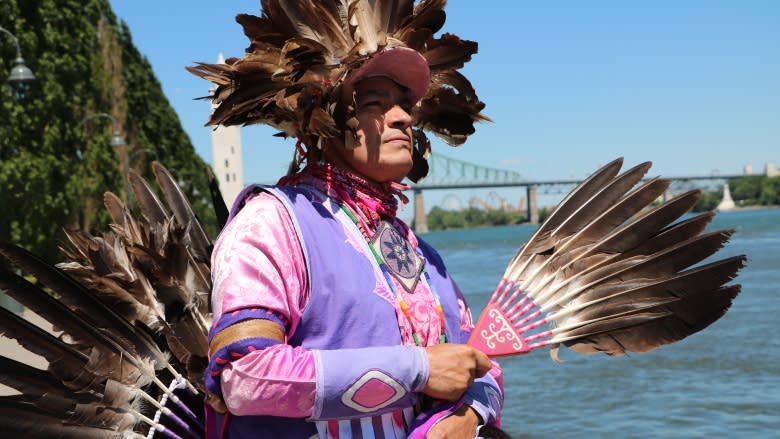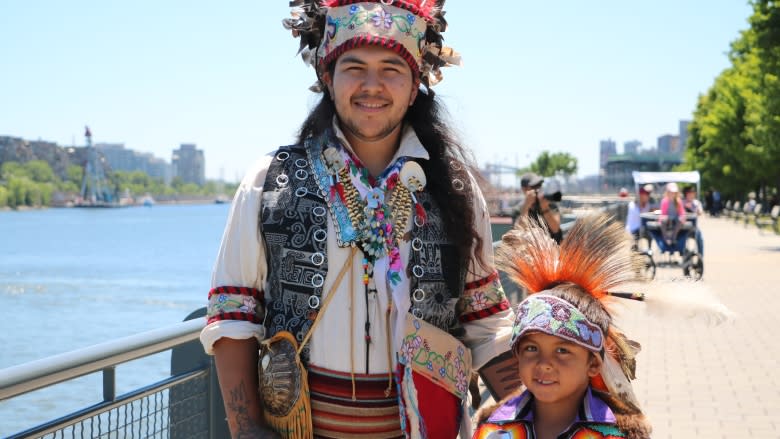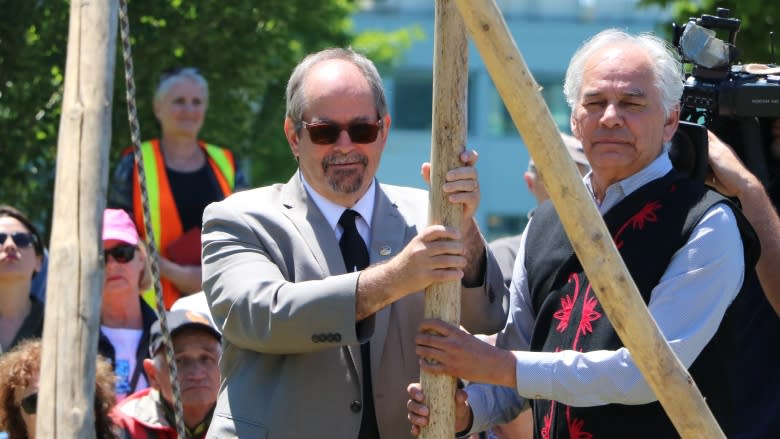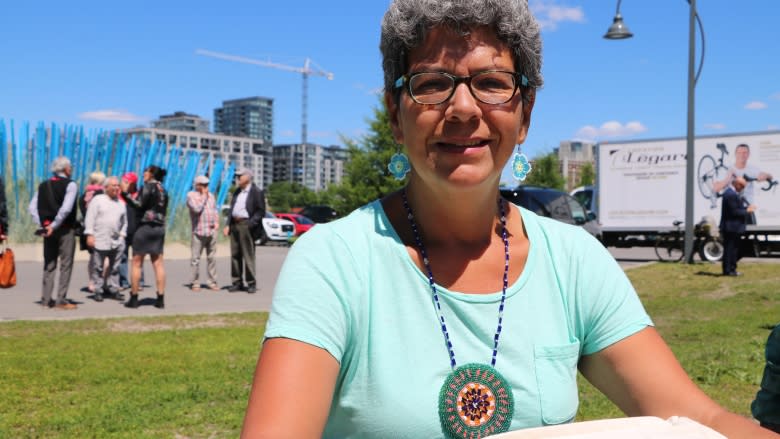How National Indigenous Peoples Day was celebrated in Montreal
For Don Barnaby, National Indigenous Peoples Day and festivities like Thursday's summer solstice ceremony in Montreal are opportunities to build bridges.
"To share our culture and let people know that being Indigenous, being Aboriginal, we're not just the original people of the land, this is something that people get to live every single day," said Barnaby, a Mi'kmaq northern traditional dancer from Listuguj, Que.
Barnaby was part of the Deer Family Dance Troupe who performed at the Old Port Thursday afternoon for Terres en vues's annual summer solstice celebration.
While he enjoys the opportunity to dance, National Indigenous Peoples Day is just another day for Barnaby. Celebrating his culture is part of his daily life.
"It's nice that they have these events to showcase our different dances, our different stories and to make it all the way across Canada to bring awareness that we're still here," he said.
"Coming from a traditional family, these are ceremonies that are practised every single day. If we can do even some tobacco burning ceremonies with [people] from outside our communities, education always overcomes ignorance."
Summer solstice event
The summer solstice event is one of the oldest urban celebrations of Indigenous Peoples Day in Canada. Since 1995, Terres en vues has organized an event in Montreal with Kanien'kehá:ka elders. Thursday marked the first time that the ceremony was held along the St. Lawrence.
"This is a connection with a very old tradition, the longest day of the year," said André Dudemaine, artistic director of Terres en Vues and the Montreal First Peoples Festival.
"Of course the Indigenous people of Canada, since eons, have connected with this special astronomic action."
The day's activities also included the assembly of a teepee by several dignitaries including Assembly of First Nations Quebec-Labrador regional chief Ghislain Picard and Quebec Native Affairs minister Geoffrey Kelley to symbolize union, friendship and co-operation.
"I look to this day as being a day where I can have a possibility to really express who I am as an Indigenous person from the Innu nation. This is not only my day, this is our day," said Picard.
"But I think that invitation also extends to our neighbours from Quebec and anywhere else to come and join us in the celebration and learn about the realities of our peoples and have a better understanding about our peoples."
Reconnecting to culture
The festivities continued throughout the afternoon with a concert at Cabot Square and a family barbecue by Native Montreal at Parc Arthur Therrien in Verdun.
"This day is a celebration," said Tealey Normandin, an outreach worker at the Native Women's Shelter of Montreal and a Sixties Scoop survivor.
"It is coming together with community, seeing my friends. For me as an adoptee, it acknowledges who I am and a key part of a community."
Normandin is a Kanien'kehá:ka from Kahnawake, but was put into foster care directly after birth. She only started reconnecting to her culture in the past decade.
"I didn't even know where to find Aboriginal people and to now realize that, as an urban Aboriginal growing up in a city, that we have a place here, too," she said.
"Seeing the people out, hearing the drums, hearing the music, it's just incredible. It's like my two worlds had just met in one."




